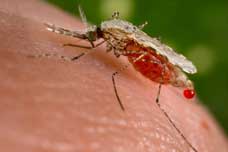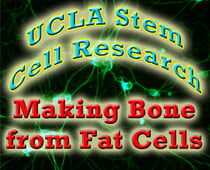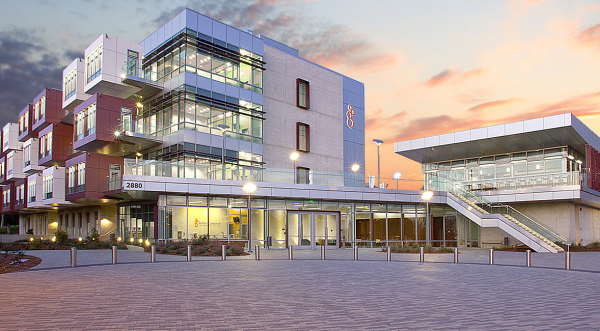Tags: CA, University of California San Diego, Stem cell research, Southwest, California, 2012, biology research, bio research, biology research scientists, Neuroscience, San Diego, UCSD, La Jolla, Biotechnology Vendor Showcase, Salk, cord blood
Anyone who's ever pulled an all-nighter to finish a project knows how it wreaks havoc with your metabolism. The fact is, it's not just a nicety to be awake and active during the day and sleep at night: it's the way bodies are hard-wired. Scientists have long-suspected that upsets in a person's biological clock could play a factor in the development of metabolic disorders like diabetes. Now a team of researchers from three Southern California universities has made surprising discoveries that support that hypothesis. Not only have they isolated the protein that regulates the biologic clock (and named it cryptochrome), but they have found a molecule called KL001 that dictates when cryptochrome gets sent to the proteasome recycling bin. Which is to say, they now know a lot more about this complex circadian system that not only tells the body when to sleep and wake, but also how the body should manage glucose levels in those periods of relative activity and dormancy. The bio research study was published in the July 13 advance online issue of the journal Science.
Tags: CA, University of California San Diego, University of Southern California, Diabetes, Southwest, California, 2012, University of California Santa Barbara, USC, Los Angeles, Biochemistry, Scripps, biology research, bio research, Front Line event, NSF
The summer of 2012 is set to go down as one of the driest and worst years for US farmers, but it's proving to be an excellent season for fruit science, especially at the University of Arizona, Tucson. In June we saw the sequencing of the tomato genome (technically a fruit), which was a breakthrough in genetics research. The Arizona Genomics Institute has now cracked another complex code: the genome of the banana.
Tags: University of Arizona, DNA Sequencing, genomic research, DNA Research, genome research, banana, University of Arizona Tucson Research, Southwest, 2012, biology research, Arizona, AZ, Genetics, Front Line event, genomics research, Tucson, UA
Funding makes laboratory research possible, which makes discovery possible, which leads to advancing knowledge and treatment options. But the primary job of a top scientist and lab director should not be to write grant proposals at the expense of time spent actually doing research. With that insight in mind, the University of California San Francisco put a system in place 5 years ago called the Resource Allocation Program (RAP). The function of the RAP is to streamline the intramural funding process so that faculty only have to fill out one application for many grants, and then only twice a year on set dates. A recent review of the program shows it to be a success, with a 66% increase in overall applications submitted and approximately a 20% increase in funding awarded in the past year alone.
Tags: CA, University of California San Francisco, biomedical research, 2012 Research Funding, Southwest, California, 2012, San Francisco, Funding, Biotechnology Vendor Showcase, UCSF, Biomedical Research Funding, Mission Bay Campus, UCSF Mission Bay
The University of Hawaii Cancer Center has successfully renewed its National Cancer Institute (NCI) designation and is on schedule to open its new world-class cancer research and treatment facility near the John A. Burns School of Medicine (JABSOM) in the Kaka’ako district of Honolulu early next year. The Hawaiian biomedical research center is the only NCI-level facility in the Pacific Islands and one of only 66 NCI research organizations in the U.S. The island state may be a tropical paradise and vacation destination in the popular imagination, but there's no doubt that its capital city is also becoming a serious biomedical research magnet as well.
Tags: biomedical research, Bioresearch, Biomedical expansion, University of Hawaii, cancer research, New research facilities, new science wet labs, Southwest, 2012, Hawaii, Cancer, Front Line event, Honolulu, HI, new construction, Cancer Center
The University of Colorado already has a terrific medical program at its Anschutz Medical Campus. This April we talked about their groundbreaking efforts against multiple sclerosis. Now, Anschutz Medical is waging war on one of America's greatest enemies: obesity.
Tags: biomedical research, University of Colorado, Southwest, 2012, Anschutz Medical Campus, BioResearch Product Faire Event, CO, public health, Fitz, Aurora
Tags: CA, University of California San Diego, Stem cell research, New research facilities, new science wet labs, Southwest, California, 2012, San Diego, UCSD research, UCSD, Stem Cell, La Jolla, Biotechnology Vendor Showcase, new construction
Biomedical science researchers have worked tirelessly at the University of California, Riverside since the discovery of a crucial link involving mice, humans, and Alzheimer's disease. Back in 2006, UCR researchers, in a collaborative effort with the University of South Florida, discovered an interesting connection between the immune system and Alzheimer's disease while experimenting on lab mice. Professor Douglas Ethell, the assistant professor of Biomedical Sciences at UCR, along with the USF's own Professor Gary Arendash of the Johnnie B. Byrd Institute, was instrumental in this find.
Tags: CA, Bioscience research, biomedical sciences, biomedical research, Bioresearch, Southwest, 2012, Alzheimer' Research, BioResearch Product Faire Event, Research, Riverside, UC Riverside, UCR
 It's summer in the Northern Hemisphere, and in most places that means mosquitos are out for our blood, which wouldn't be much to give up if it weren't for the itchy -- and in many parts of the world, deadly -- package that the tiny insect leaves behind. Plasmodium falciparum is the human malaria pathogen that kills over a million people annually around the world (largely infants, young children and pregnant women, most of them in Africa). One approach to combatting the spread of the disease is to genetically engineer a mosquito that cannot transmit the parasite and yet is able to reproduce with mosquitos that do, in order to infiltrate and alter the population overall to become one that is benign (except for the itching).
It's summer in the Northern Hemisphere, and in most places that means mosquitos are out for our blood, which wouldn't be much to give up if it weren't for the itchy -- and in many parts of the world, deadly -- package that the tiny insect leaves behind. Plasmodium falciparum is the human malaria pathogen that kills over a million people annually around the world (largely infants, young children and pregnant women, most of them in Africa). One approach to combatting the spread of the disease is to genetically engineer a mosquito that cannot transmit the parasite and yet is able to reproduce with mosquitos that do, in order to infiltrate and alter the population overall to become one that is benign (except for the itching).
Tags: CA, University of California Irvine, Southwest, California, 2012, genetic engineering, BioResearch Product Faire Event, Irvine, UCI
 Bone marrow was the first stem cell source to be widely used in clinical transplant surgery to replace damaged bone as a result of injury or chemotherapy. Unfortunately, bone marrow grafts are painful, and the appropriate donor is not always available when the need is there. Now research at the University of California Los Angeles' Broad Center of Regenerative Medicine has demonstrated successfully that stem cells from the patient's own fat (i.e. adipose tissue) can be made usable for bone damage treatment. Bone marrow is, after all, the soft, fatty tissue inside your bones that contains immature cells (aka stem cells) that give rise to all of your blood cells. So looking to fatty tissue from another part of the body to produce mesenchymal cells has made sense all along, though it has taken the efforts of several UCLA teams to show how it can be done in an animal model.
Bone marrow was the first stem cell source to be widely used in clinical transplant surgery to replace damaged bone as a result of injury or chemotherapy. Unfortunately, bone marrow grafts are painful, and the appropriate donor is not always available when the need is there. Now research at the University of California Los Angeles' Broad Center of Regenerative Medicine has demonstrated successfully that stem cells from the patient's own fat (i.e. adipose tissue) can be made usable for bone damage treatment. Bone marrow is, after all, the soft, fatty tissue inside your bones that contains immature cells (aka stem cells) that give rise to all of your blood cells. So looking to fatty tissue from another part of the body to produce mesenchymal cells has made sense all along, though it has taken the efforts of several UCLA teams to show how it can be done in an animal model.
Tags: University of California Los Angeles, Stem cell research, cancer research, Southwest, California, Los Angeles, UCLA, Research, Stem Cell, Biotechnology Vendor Showcase, BVS, science solution


